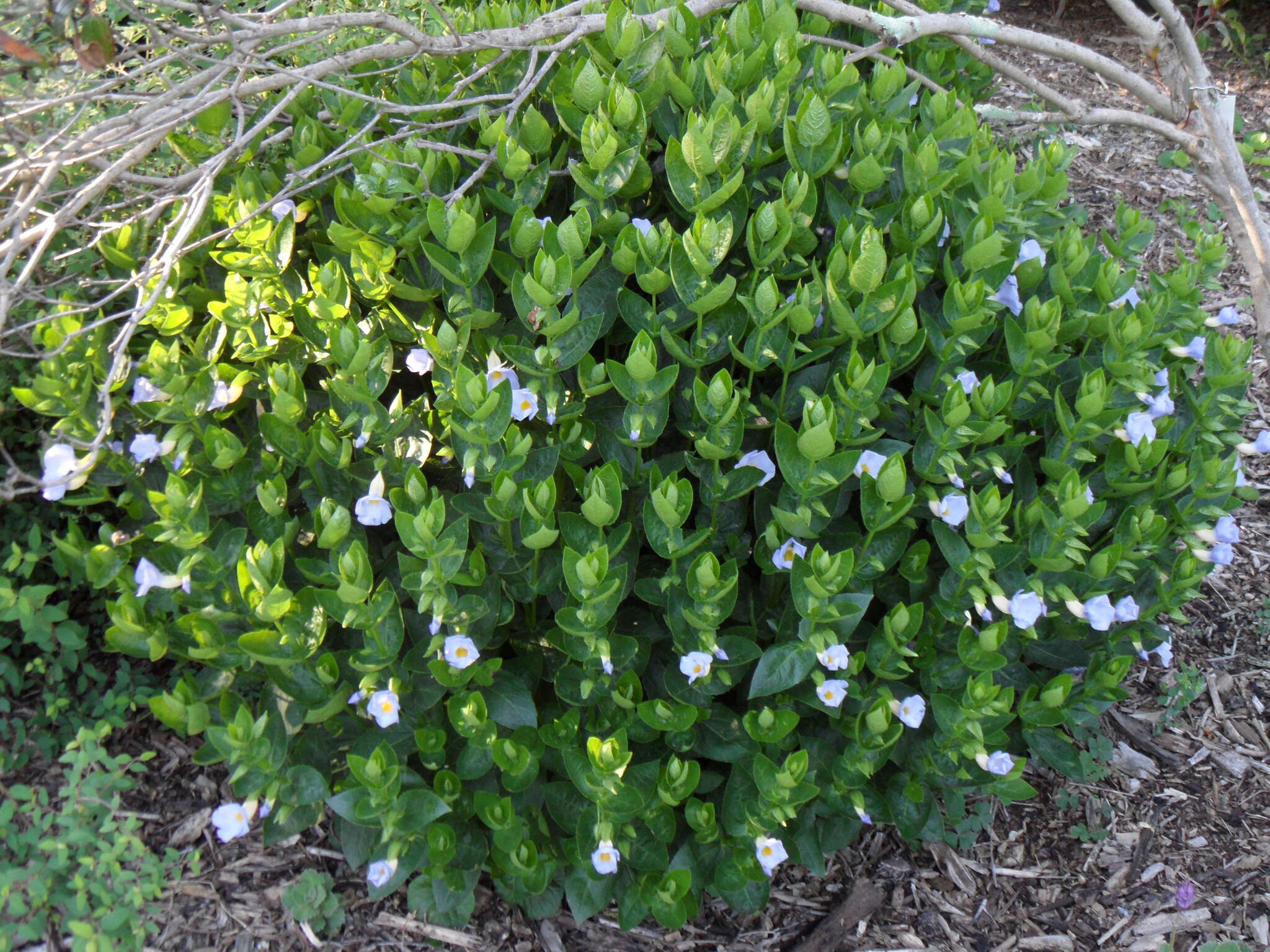
Mostly shrubs, occasionally herbs, climbers or small trees, generally with grooved or angled branches and transverse ridges at the nodes. Leaves simple, opposite, decussate,margins entire or shortly toothed, rarely spiny or deeply cut. Flower clusters axillary or terminal. Flowers bisexual and mostly irregular, generally with a bract and 2 leafy bracteoles, 4- or 5-parted. Sepals mostly 5, fused at the base. Petals fused to form a tube with 5 lobes that sometimes form 2 lips. Stamens 2 or 4, sometimes 2 infertile, the filaments free or fused in pairs. Ovary superior. Carpels 2, united, each of the 2 chambers containing 2-12 ovules. Fruit a loculicidal capsule producing 2-many seeds.
A family considered to be closely related to the Scrophulariaceae. Many are grown in cooler climates as indoor plants with variously variegated and streaked leaves and attractive flower spikes which often have colourful bracts.
Two native species are sometimes grown in warmer districts: Brunoniella australis (Cav.) Bremek, Blue Trumpet, from NSW, Qld and the NT, sometimes available as a prostrate or erect herb to about 15 cm tall; and Dipteracanthus australasicus F.Muell., which is a woody herb or shrub from WA, SA, NSW, Qld and the NT that grows to 1.5 m tall, with a blue to purple or white flower tube. Dicliptera suberecta (André) Bremek. from Uruguay is a grey-felty trailing herb with dull orange flowers and is occasionally grown, especially in hanging baskets; Peristrophe hyssopifolia (Burm. f.) Bremek. from Java is a perennial with opposite, entire, lanceolate leaves to about 8 cm long and pink flowers in terminal clusters; it is occasionally grown, mostly indoors, as the cultivar 'Aureovariegata', Marbleleaf, which has a central yellow blotch spreading outwards into the veins.
A yellow dye is extracted from Justicia [Adhatoda] and a blue one from Strobilanthes. Acanthus extracts have been used medicinally.
Opposite leaves, the nodes with transverse ridges; flower spikes often with colourful bracts and leafy bracteoles; stamens 4 or 2.
About 357 genera of 4350 or so species, mainly from the tropics and with centres of distribution in Africa, Brazil, C America and Indo-Malaysia. Australia has 28 genera and about 57 species.
Source: (2002). Acanthaceae. In: . Horticultural Flora of South-eastern Australia. Volume 4. Flowering plants. Dicotyledons. Part 3. The identification of garden and cultivated plants. University of New South Wales Press.
